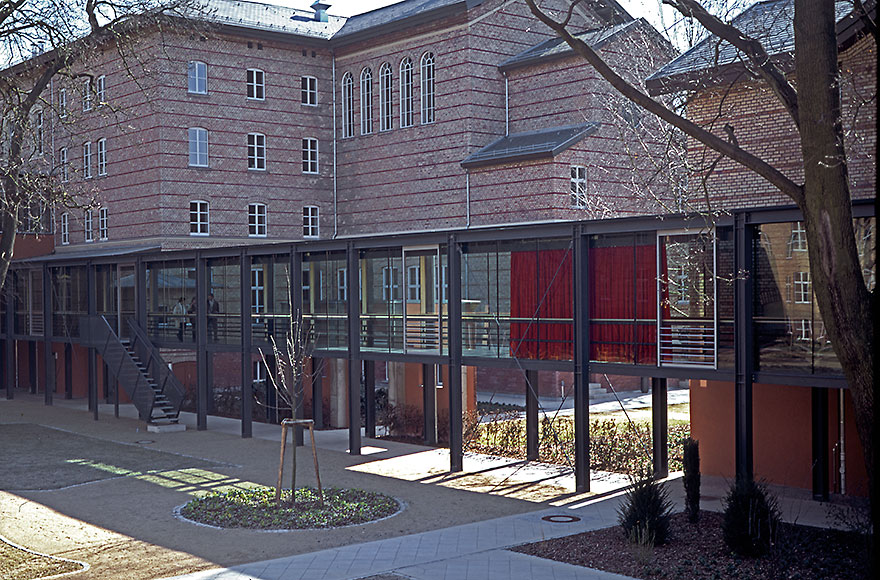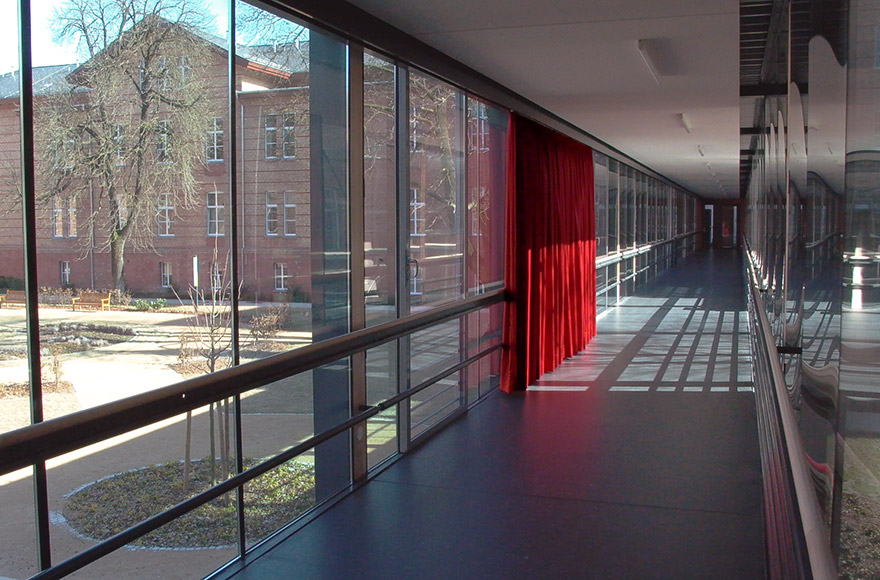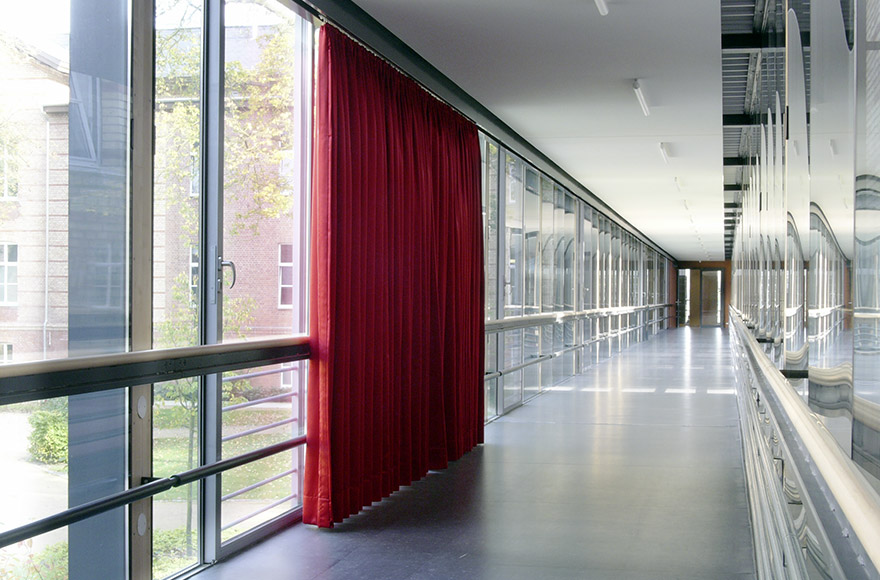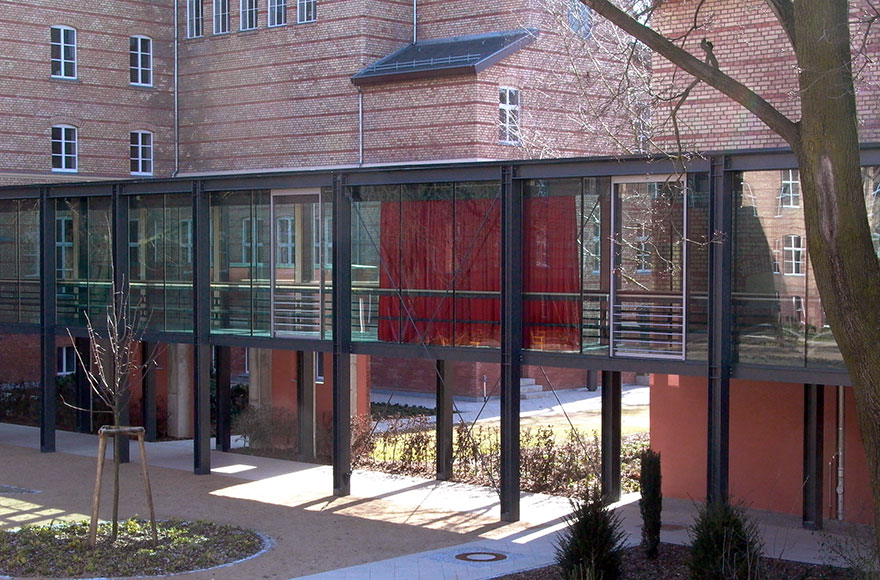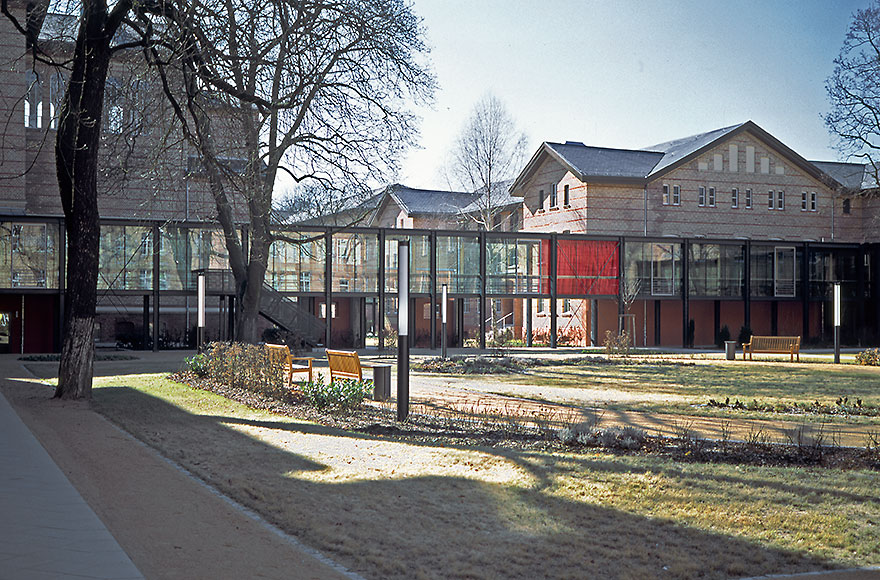Realised in 2002 in the Martin Gropius hospital in Eberswalde, Germany. Commissioned by the Bernau State Planning Office and the Brandenburg Ministry of Finance.
A 60 m elevated passage connects the main building of the hospital with the administrative building, passing through the park and herb garden at a height of approximately 3 m. The passage is fully glazed on both sides and offers an unfettered view of the surrounding park landscape. A curtain is suspended from a rail that runs along the entire length of the passage. In the tradition of English home furnishing fabrics, it is made of fine, soft material, double-stitched and lined to create beautiful, uniform folds. With a width of 460 cm and a height of approximately 270 cm, it takes up one thirteenth of the length of the connecting passage. By means of a motorised cable pull, the curtain moves very slowly, hardly noticeably, along the entire glazed connecting passage over a period of 12 hours. The curtain is a frequent prop in the history of culture and art. In addition to the discourse on folds, in which the harmony of the whole is emphasised, it plays with curiosity, reality and imagination. In 1964, Jacques Lacan wrote: “If you want to fool someone, you only need to hold a picture of a curtain in front of him, i.e. the image of something beyond which he wants to see.” The imperceptibly moving curtain is about hiding and revealing, presence and absence. Every single position of the curtain results in a new situation in front of and behind it. The staging of the space and the landscape changes constantly. Made of fine material and with lavish folds, the red curtain creates associations with a stage curtain. The elevated position of the glazed passage reinforces this impression and turns the landscape into a stage. The title curtain.mov refers to the data suffix of digital videos. With its window grid, the passage is reminiscent of the timeline of a video editing progamme, via which the surface of the red curtain moves in slow motion. At a constant speed of 1.2 mm per second, curtain.mov moves roughly 720 times more slowly than a person, who needs only a minute to walk across the passage. The mobile coloured surface of the curtain and the vertical steel girders create rhythm in the passage and its environment. The sections of landscape are imperceptibly yet continuously changed. The sight lines are structured and accentuated. Landscape and nature appear in frames with constantly changing proportions.
Photos: Thorsten Goldberg

